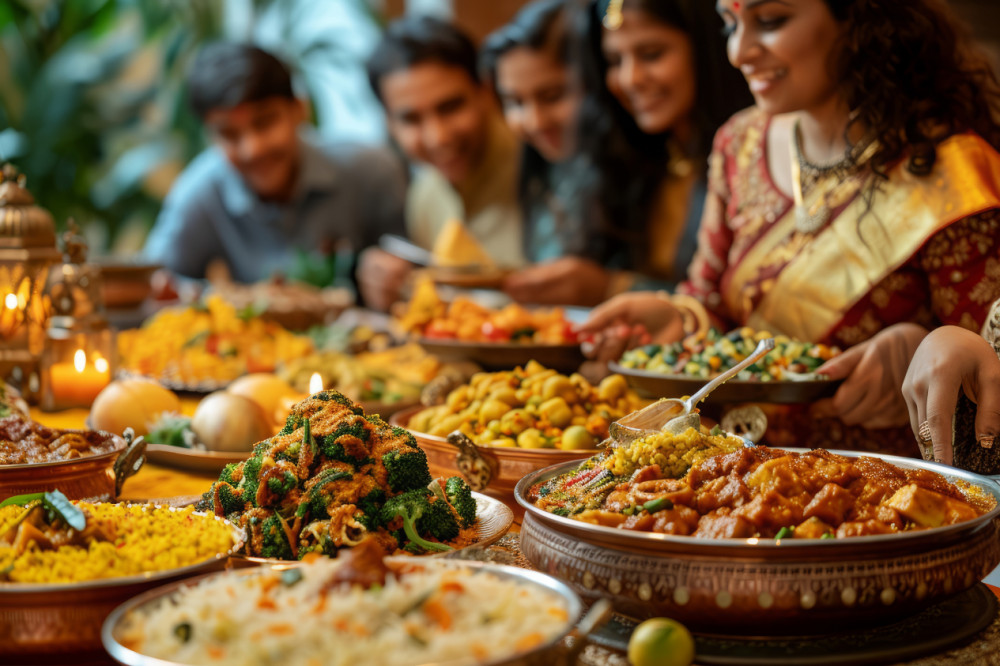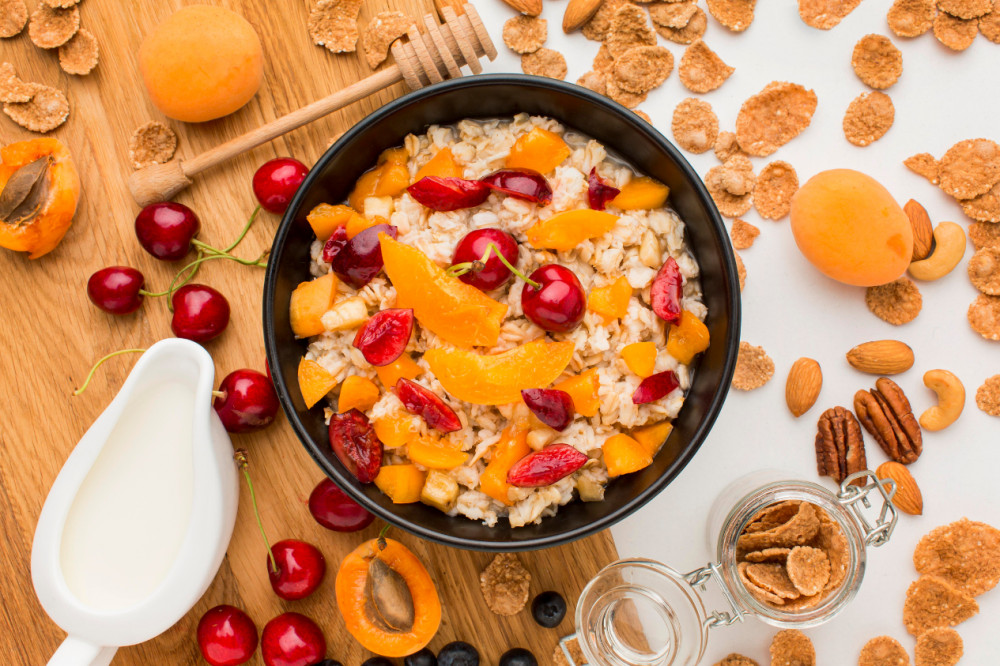
The Comeback of Turmeric, Barley, Flax & Indian Kale/Collard Greens
The Comeback of Turmeric, Barley, Flax & Indian Kale/Collard Greens How would you feel when your desi cousin goes for a study trip abroad and comes back all popular and jazzed- up with a makeover? Well, that is precisely what has happened to a lot of our superfoods. The benefits of such home-grown ingredients are getting a lot of appreciation overseas and are gaining popularity on the home-front as well. But before we talk about them, lets us go through an overview of what kind of food we’ve consumed since forever.
The Food Our Ancestors Consumed Before foreign rulers invaded our lands, India was a self-reliant realm that had an agronomical system that was way ahead of its time. Our ancestors consumed produce indigenous to their region and that kept them fit and healthy. They believed in eating foods that were seasonal and within a 100-mile radius. This made the food compatible with the environment they lived in. It also ensured that the ingredients were relatively fresh and locally produced without artificial preservatives. But the same can’t be said about us. Our modern dietary ingredients are quite different from what the elders consumed in their heydays. Wheat and rice became a part of our diet not very long ago. Before that, we consumed a lot of locally produced grains like Barley, Millet, Bajra etc. They are much more hearty and filling than rice and wheat and have so many benefits. We’ve also had local greens and vegetables that were cooked with a generous sprinkling of local herbs, spices and seeds. This helped us built our immunity increased the rate of ailments and mortality amongst our elders. Some of these indigenous ingredients have had a massive presence in Indian households and gained fame in the west as well. Our elders diligently tried to make us eat these healthy items but we frowned upon them when we were kids. Now that the firangs can’t get enough of these gems, we want to have it too. So let us talk about four such ingredients that had a smashing come back once they had a trailblazing effect in the west.

The Food Our Ancestors Consumed Before foreign rulers invaded our lands, India was a self-reliant realm that had an agronomical system that was way ahead of its time. Our ancestors consumed produce indigenous to their region and that kept them fit and healthy. They believed in eating foods that were seasonal and within a 100-mile radius. This made the food compatible with the environment they lived in. It also ensured that the ingredients were relatively fresh and locally produced without artificial preservatives. But the same can’t be said about us. Our modern dietary ingredients are quite different from what the elders consumed in their heydays. Wheat and rice became a part of our diet not very long ago. Before that, we consumed a lot of locally produced grains like Barley, Millet, Bajra etc. They are much more hearty and filling than rice and wheat and have so many benefits. We’ve also had local greens and vegetables that were cooked with a generous sprinkling of local herbs, spices and seeds. This helped us built our immunity increased the rate of ailments and mortality amongst our elders. Some of these indigenous ingredients have had a massive presence in Indian households and gained fame in the west as well. Our elders diligently tried to make us eat these healthy items but we frowned upon them when we were kids. Now that the firangs can’t get enough of these gems, we want to have it too. So let us talk about four such ingredients that had a smashing come back once they had a trailblazing effect in the west.

The Resurgence of Barley Water As a teenager, I always wanted to try beer because it looked fizzy, golden and cool but the only thing I could have was barley water or barley soda. A couple of my friends and I frequented to a hangout spot in Ahmedabad that served flavoured barley water. We went there once a week because it looked cool and we would trip on the forced placebo. Years later, I finally realised that the orange and lemon flavoured barley water we had was a lot more than what met the eye. Our ancestors have always had barley in their diet. Be it as a replacement of rice, flour or in the form of barley water, the benefits of barley are innumerable. Barley water is good for all kinds of urinary tract infections and helps in keeping your energy levels high. It also keeps you cool in summers and is an excellent drink for people who want to lose weight and stay fit. In recent years, this drink’s resurgence has gained a lot of popularity amongst the younger generations. Call it a fad or the need to stay fit and consume well, the translucent elixir is here to stay for good.

The Return of the Nutty Flax Seeds Flax seeds have been part of the Indian culture since a long time now. Better known in India as ‘Alsi’, the flour of this seed has been used in a lot of indigenous communities in our country. As a kid, I was very finicky about the kind of flour my mom used. I preferred rice flour or wheat flour and whenever my mom made capsicum alsi sabzi or alsi laddoos, I would make a face. She would repeat this joke every single time, “Alsi khaya kar warna aalsi ho jaegi” (The hindi word ‘aalsi’ means ‘lazy’ so what she means is “eat flax or you will become lazy” *typical Indian wordplay/mom joke. *Sighs dramatically*) Two decades later, I daily have a spoon of roasted flax seeds with my soaked almonds and my mom can’t stop smirking. Why this change, you ask? Because it has been termed as a superfood with remarkable properties. For one, it is loaded with dietary fibre and is high in Omega-3 Fats. Packed with high-quality protein, the lignans in it might actually reduce the risk of cancer. It is also good for your heart. So a healthy sprinkle on your oats or veggies will add a nice crunch to your meals and fill you up as well.

The Revival of the Indian Kale/Collard Greens The hills in our Indian subcontinent are filled with a variety of local green leafy vegetables. You might have heard your pahaadi friend talk about the simple broths and stews made with such indigenous leafy vegetables growing abundantly in the hilly valleys. The Kashmiri Haakh stew is made of such peppery leaves and so is Lai ki sabji, an indigenous leafy vegetable from the hilly towns of Uttarakhand. Known as Indian Kale/Collard greens amongst millennials, this leafy vegetable has suddenly made a mighty comeback and how. It has a flavour profile of Mustard Greens, Collard Greens and normal Kale leaves combined. These leaves are good for ailments like bronchitis and asthma and are packed with nutrients.
Conclusion Globalisation has had a huge impact in connecting the entire world seamlessly. Consuming exotic ingredients like berries, veggies, and cured meats that aren’t local, represent having a status symbol. But every now and then, we come across a viral food trend that makes us realise the fact that our local food habits have always been ahead of its time.
Related Blogs

Fermented Indian Foods That Heal After Heavy Eating
16 Views

Reimagined: Creative Ways to Reuse Sweets & Savories
16 Views

Rituals on a Plate: The History of Food Offerings in Indian Festivals
43 Views

What Are Adaptogen Foods? 10 Indian Recipes That Use Them
66 Views

August Fruits and How to Use Them in Indian Recipes
82 Views